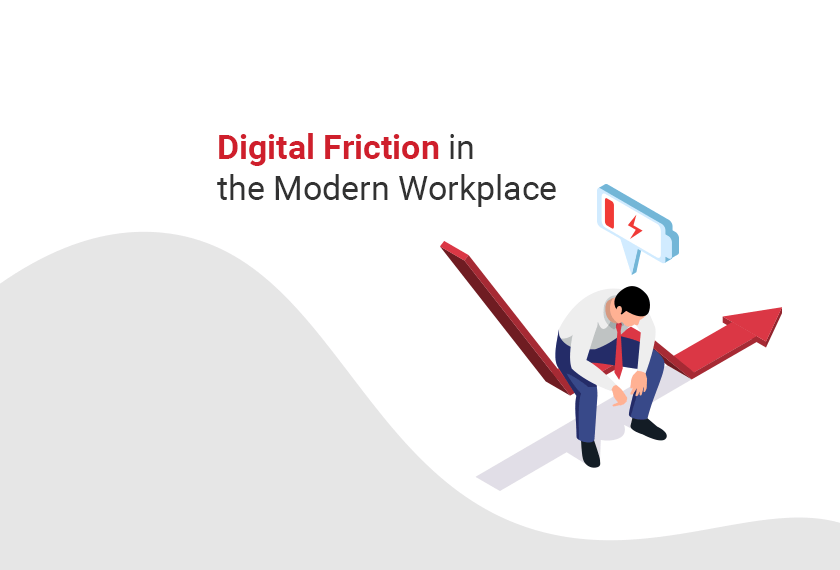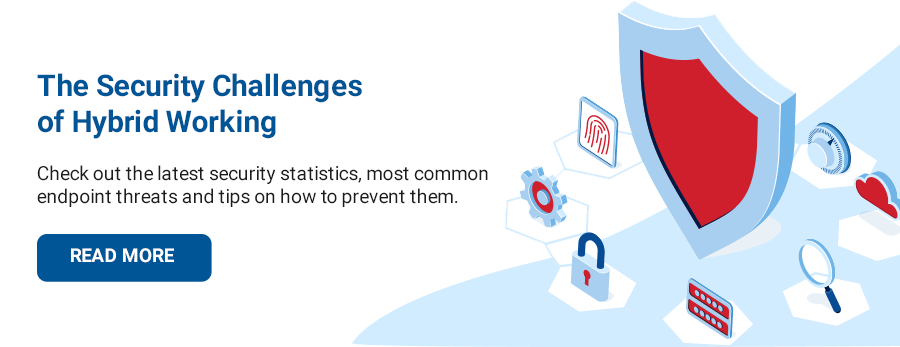
In today’s modern workplace, things are often moving at a fast pace. Emails are flying back and forth, meetings are happening left and right, and deadlines are always looming. Many different tools and platforms are being used daily, and they are often making our lives easier. But that’s not always the case, right?
Employees often spend hours searching for the right file, have trouble running essential apps, and lose time due to disruptive software upgrades or when trying to remember all their passwords—or even when trying to figure out how to use multiple software at the same time.
So, that one thing that is often slowing everything down – is called digital friction.
But what does digital friction really mean? Is that just another challenge in the modern workplace that only affects the user experience? Does it only affect certain types of businesses? Or are we all subject to digital friction?
These are some of the many questions and common misconceptions about digital friction.
So, let’s dive into some facts.
What does digital friction really mean?
Digital Friction refers to people’s obstacles and difficulties when interacting with digital products or services. Basically, it’s all the excessive effort put in by employees to use technology for work.
It can include issues such as confusing user interfaces, slow loading times, or a lack of communication. The goal of reducing digital friction is to make the user experience as smooth and seamless as possible. A great user experience is crucial for success!
Now that we know what digital friction means. Let’s address some common misconceptions.
Some of them usually include the following:
- Digital friction only affects the experience. That is not entirely true. While user experience is undoubtedly an essential aspect of digital friction, it is not confined to it. This means that digital friction can impact other business metrics, such as productivity, recruitment costs, and the risk of losing valuable and skilled employees.
- Digital friction affects only certain types of businesses. What industry immediately sprang to mind when you heard about digital friction? IT industry? E-commerce? While it is often present in technology-heavy sectors, digital friction can impact companies of all sizes and industries.
- Digital friction is only a problem for technical people. It can impact anyone who interacts with digital products or services, regardless of their level of technical expertise.
Digital Friction Can Impact Your Productivity
Digital friction is a common challenge in the IT and ITSM industry. Especially in remote and hybrid work models, it is common for teams to waste valuable time and productivity trying to get technology and systems to work for them through IT remote support accessing or controlling equipment to resolve issues if digital friction is present.
This is due to several reasons, such as miscommunication, use of multiple technologies and tools, lack of inclusion, complex and confusing interfaces, lack of personalisation, difficulty finding information, lack of integration, and inadequate self-service options.
These factors can slow down employees and make it more difficult for them to complete tasks. This can lead to various negative impacts on productivity, increased information abandonment or decreased customer satisfaction, decreased employee retention, and more.
According to Gartner, digital friction has become a silent killer of employee engagement, productivity and growth.
Here are some ways in which digital friction can harm your business
- Reduces productivity and engagement: When employees face obstacles in completing tasks, they can become frustrated and take longer to finish. This can result in decreased efficiency and negatively impact your overall productivity.
- Increases support costs: Your support team might need to work harder as they need more time and resources to complete a task. And that often means – increasing costs!
- Information abandonment: If employees can’t find what they’re looking for most of the time, they might feel frustrated or even give up on a process. So, digital friction doesn’t make it easy, and it often means missed opportunities and higher costs.
- Decreased customer loyalty: When customers encounter digital friction, they may be less likely to return to a business in the future, leading to decreased customer loyalty.
- Decreases employee retention: Bad experiences and reviews can damage your company’s reputation, and digital friction plays a significant role in their creation.
- Regulation and compliance: Digital friction can make it more difficult for organisations to comply with regulations, such as GDPR, related to data protection and user privacy.
- Security risks: Finally, it can make it more difficult for organisations to secure their digital products or services, which often leads to a higher risk of data breaches and other security incidents.
Here’s How to Get Ahead of Digital Friction
This may seem frightening, but rest assured – there’s a way to tackle digital friction.
By implementing some of the following strategies, you can minimise the negative impact of digital friction and create a better employee experience.
✔ Reducing the number of tools. Using too many tools and technologies can disrupt employees’ workflow, as switching between them leaves employees without the necessary time to focus on actual work. So, ensure not to overwhelm employees with too many tools and optimise them and IT systems for speed.
✔ Encourage employees to use a password manager to securely store all their passwords so they don’t have to worry about memorising them.
✔ Provide training and education to enhance employees’ productivity, improve their satisfaction, and help reduce digital friction.
✔ Provide self-service options such as an internal knowledge base, as this can help them find the information they need and complete tasks.
✔ Allow employees to personalise their experience, find the information, and use the most relevant features.
✔ Ensure your employees have a great tool for communication that allows them to collaborate and communicate effectively with the rest of the team.
Conclusion
Surely, digital friction is not necessarily a solely negative phenomenon. For example, digital friction can encourage employees to find new and better ways to do their jobs, which pushes them to be creative and innovative. However, in most cases, the negative effects of digital friction on productivity still far outweigh any potential benefits.
Digital friction is causing many problems in the modern workplace, but solutions exist!
Companies can remove this friction and increase productivity by finding ways to streamline processes and make it easier for employees to access the information and tools they need.
They should replace digital friction with digital empathy. In other words, they should adopt solutions that account for their employee’s emotions and different experiences while interacting with technology.
This will support improving the digital employee experience and allow employees to perform to the best of their abilities.

Antonija Bozickovic
SDI's Content Creator



























